ELTA Music Solar 42 Handleiding
ELTA Music
Synthesizer
Solar 42
Bekijk gratis de handleiding van ELTA Music Solar 42 (2 pagina’s), behorend tot de categorie Synthesizer. Deze gids werd als nuttig beoordeeld door 37 mensen en kreeg gemiddeld 4.3 sterren uit 19 reviews. Heb je een vraag over ELTA Music Solar 42 of wil je andere gebruikers van dit product iets vragen? Stel een vraag
Pagina 1/2

SOLAR 42: KEYBOARD
The Solar keyboard is a performance oriented touch controller featuring
12 capacitively sensitive plates, equipped with highly accurate Volt/octave
outputs, ready to connect to your modular setup also.
* * * * *
CLOCK
External clock input. When a clock pulse is received the keyboard
automatically switches to external clock source. Recommended level: 0 to
+5V, though higher voltages are accepted.
VOLT/OCTAVE
Volt/octave output, ranges over 8 octaves from 0V to +8V. By default the
signal present on this output is normalized to the Volt/octave input of the
VCOs (voice 4 and 5).
GATE LEFT (MAIN)
0 to 10V gate output. By default the signal present on this output is
normalized to the gate input of the envelope generators controlling the
voltage controlled ampliers of voices 4 and 5.
GATE RIGHT
0 to 10V gate output.
PRESSURE
Control voltage or Volt/octave output, ranges over 8 octaves from 0V to
+8V. The signal on this output is determind by ‘Behaviour’ and ‘Pressure
output’ parameters.
RESET
Arpeggiato reset input. A raising edge on this input resets the arpeggiator
to its rst step. Recommended level 0 to +5V, though higher voltages are
accepted.
BUTTONS
The pushbuttons are used to transpose the output of the keyboard. Their
behaviour depends on some settings.
In ‘Single behaviour’ when quantiser is enabled the pushbuttons set the
active octave range of the keyboard. In ‘Single behaviour’ when quantiser
is disabled the pushbuttons add an oset to the signal present at the Volt/
octave output. In ‘Twin and split behaviour’ pressing the pushbutton will
enable or disable the oset of the corresponding side of the keyboard.
When quantiser is enabled the amount of oset can be altered by
semitones over 5 octaves. When quantiser is disabled the amount of oset
can be netuned in 0.0025V steps over 5V.
To change the value of the oset press and hold the button and rotate
the encoder (just make sure that currently no parameter is highlighted for
editing).
ENCODER
Rotate the encoder to scroll through the list of parameters, click the
encoder to to select a parameter for editing.
KEYBOARD PLATES
To activate a plate’s designated note or voltage level, simply press it. This
value will be present on the Volt/octave output as analog voltage. For
tuning a note plate, press and hold it while rotating the encoder to adjust
its value. For successful adjustment, ensure that no parameter is currently
highlighted for editing.
The signal level present on the pressure output is directly proportional
to the readings of the capacitive sensors connected to the plates. It’s
essential to note that the Solar keyboard is not force-sensitive but responds
to the surface area of esh applied directly to the plates. The capacitive
sensor’s output increases with more nger surface area placed on the
plate.
* * * * *
The keyboard’s functionality is determined by certain parameters. These
parameters can be grouped as follows:
- BEHAVIOUR
- ARPEGGIATOR
- PORTAMENTO
- VIBRATO
- PRESSURE
- QUANTISER
- CLOCK
Behaviour:
single - 12 key mode, the signal present on the pressure output is
determined by the ‘Pressure output’ parameter (see below).
twin - In this mode, the keyboard separates into two distinct controllers,
each equipped with 6 note plates. In this conguration, the pressure output
functions as the Volt/octave output for the right side. While the two sides
share the same parameters, they can be played independently.
split - Similar to the twin mode, the keyboard can also operate in a split
mode with two sides, each having separate parameters. This conguration
enables various possibilities, such as having an arpeggiator on the left side
and a simple keyboard on the right side.
* * * * *
Arpeggiator state:
The arpeggiator is a common synthesizer feature that generates a looping
sequence (arpeggio) when you press down a chord. Rotate the encoder to
enable/disable arpeggiator.
Arpeggiator hold:
When enabled the arpeggiator will continue to play the arpeggiated
sequence even when note plates are not held.
Arpeggiator clock:
Sets the clock multiplication/division ratio for the arpeggiator.
Arpeggiator direction:
Synthesizers with traditional piano keys will generate the order of the
arpeggiated sequence based on the incoming notes. Solar creates an
arpeggio based on the sequence number of pressed plates and
the direction parameter.
- forward [eg.: 1, 2, 5, 8, 1, 2, 5, 8...]
- backward [eg.: 8, 5, 2, 1, 8, 5, 2, 1...]
- ping-pong [eg.: 1, 2, 5, 8, 5, 2, 1, 2...]
- random
Arpeggiator variation:
When enabled the arpeggiated progression will be played again
transposed by the selected intervall. The possible number of repeated
variations can be: OFF (no variation), x1, x2, x3
Arpeggiator variation intervall:
Sets the interval of repeated variations from 1 to 12 semitones.
Arpeggiator rhythm:
Applies a rhythmic pattern to the arpeggiators clock source. Think of it as
a gate sequencer between the clock source and the arpeggiators clock
input. Steps that are enabled will let through the incoming clock signal,
while the steps that are disabled will mute it.
Arpeggiator rhythm length:
Sets the length of the rhythm sequencer from 1 to 8 steps.
* * * * *
Portamento:
Set the speed of gliding (0 - 255), i.e. how much time it takes to transition
from one pitch to the next. This creates slew limiting eect on the CV
output.
Legato:
o - Portamento is always on.
on - Gliding happens only when two or more note plates are touched
simultaneously (this parameter has no eect when arpeggiator is enabled).
* * * * *
Vibrato speed:
Sets the rate (0 - 127) of the LFO that’s modulating the pitch (Volt/octave)
output, thereby creating vibrato eect.
Vibrato depth:
Sets the amount of modulation (0 - 127).
Vibrato delay:
Species a time delay (0 - 127) before vibrato begins to apply until it
reaches the full strength determined by the depth parameter.
Vibrato pressure control:
When enabled, the modulation amount is altered by the pressure applied
to keys.

Pressure output:
pressure - The voltage on the pressure output will continuously follow the
pressure applied to key plates.
ASR - Attack/sustain/release envelope generator.
AD - Attack/decay envelope generator.
LOOP - Looped AD envelope generator.
random - Outputs a random voltage whenever a plate is pressed.
Rise:
Creates slew limiting eect on rising edge in pressure and random modes,
sets attack time in envelope modes (0 - 255).
Fall:
Creates slew limiting eect on falling edge in pressure and random modes,
sets decay/release time in envelope modes (0 - 255).
* * * * *
Scale editor:
Turn notes on/o of the scale applied by the note quantiser. When all notes
are disabled, the keyboard functions as a microtonal keyboard. In this
mode, it allows for the exploration and performance of microtonal music,
where pitches and intervals can be nely tuned beyond the standard
12-tone equal temperament system. This feature enables musicians to
access a wider range of scales and tonalities, opening up new possibilities
for creative expression and experimentation in their compositions and
performances.
Load scale:
Select and load a preset scale/mode to the quantiser and to the keyboard
also. (Semitones, Ionian, Dorian, Phrygian, Lydian, Mixolydian, Aeolian,
Locrian, Blues major, Blues minor, Pentatonic major, Pentatonic minor, Folk,
Japanese, Gamelan, Gypsy, Arabian, Flamenco, Whole tone).
Root note:
Sets the root note of the scale applied by the note quantiser from C to H.
* * * * *
Clock:
Sets the tempo of the keyboards internal clock within a range of 10 to 300
BPM (Beats Per Minute). While this range might seem limited at rst, it can
be signicantly extended by utilizing the arpeggiator’s clock multiplication/
division parameter.
When a clock pulse is received through the CLOCK INPUT jack, the
keyboard will automatically switch to using the external clock source for
synchronization. To revert back to the internal clock, all you need to do
is modify the BPM setting. By adjusting the tempo value manually, the
keyboard will resume using its internal clock for tempo generation.
Product specificaties
| Merk: | ELTA Music |
| Categorie: | Synthesizer |
| Model: | Solar 42 |
Heb je hulp nodig?
Als je hulp nodig hebt met ELTA Music Solar 42 stel dan hieronder een vraag en andere gebruikers zullen je antwoorden
Handleiding Synthesizer ELTA Music

1 Maart 2024
Handleiding Synthesizer
- Majella
- Novation
- Kodamo
- Erica Synths
- Suzuki
- Synamodec
- Elektron
- Yamaha
- Arturia
- Dnipro
- Jomox
- Soma
- Sonicware
- Boss
- Dreadbox
Nieuwste handleidingen voor Synthesizer

30 Juni 2025
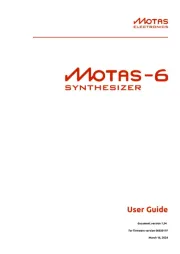
10 Juni 2025
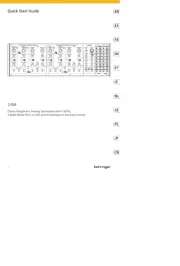
4 Juni 2025
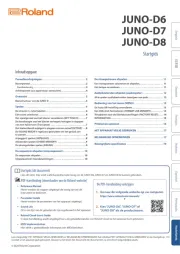
16 Mei 2025
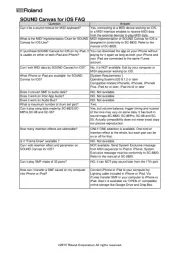
13 Mei 2025
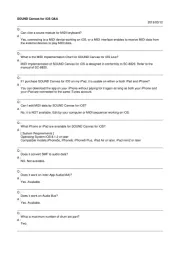
13 Mei 2025
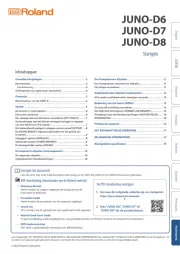
12 Mei 2025
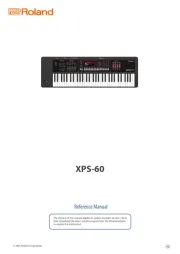
12 Mei 2025
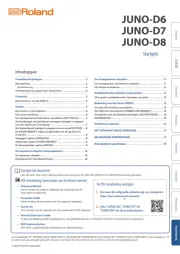
12 Mei 2025
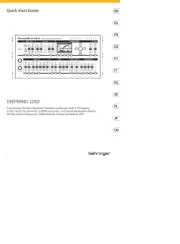
1 April 2025